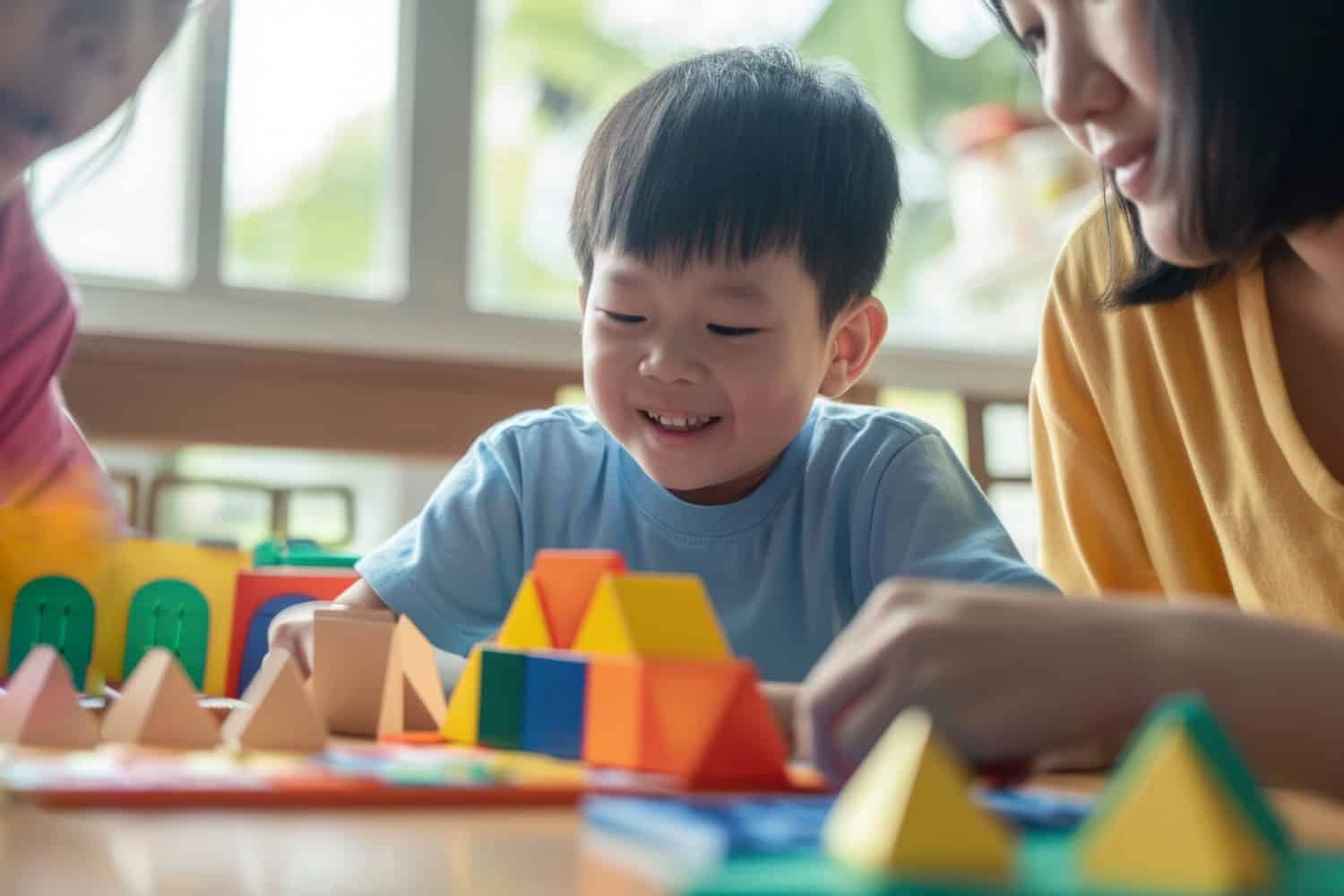A supportive learning environment is essential for the successful development of young autistic children, especially when it comes to honing their communication, social skills, and other critical developmental areas. As a renowned ESDM early intervention provider in Melbourne, Amazing Kids is dedicated to assisting parents and potential therapists in utilising evidence-based Early Start Denver Model (ESDM) techniques to create a nurturing and conducive learning environment for children under 5. Implementing these techniques empowers autistic children to thrive, overcome developmental challenges, and reach their full potential in various facets of life.
In this informative blog post, we will delve into the ESDM techniques that can be employed to create a supportive learning environment for young autistic children. We will explore various strategies, activities, and approaches that address the unique needs of each child while supporting their communication, social skills, and overall developmental growth. Our goal is to provide parents and potential therapists with essential guidance and resources, enabling them to create an optimal learning setting that nurtures the success of young autistic children.
Discover how Amazing Kids can help you develop a supportive learning environment for young autistic children using effective ESDM techniques. Whether you are a parent or potential therapist, our insights and expertise can guide you in nurturing the growth and wellbeing of these children, ensuring their continued success and happiness.
1. Emphasising Structure and Routine for a Positive Learning Environment
Consistent structure and routine play a significant role in the comfort and success of young autistic children in a learning environment. ESDM techniques incorporate structure for establishing a stable learning atmosphere:
- Designate specific areas within the learning environment for particular activities, such as playtime, quiet time, and learning sessions, to create a sense of predictability and order.
- Ensure consistency in daily routines and schedules, enabling autistic children to more easily anticipate and adapt to changes in their environment.
- Implement visual schedules and transition cues to provide clear expectations and reduce anxiety associated with changes in activities or routines.
2. Fostering Effective Communication and Social Interaction
A supportive learning environment encourages the development of communication and social skills in young autistic children. ESDM techniques facilitate these fundamental skills in various ways:
- Create opportunities for social interaction and communication practice with peers, family members, and therapists, through structured play and group activities.
- Utilise visual cues, social stories, and communication devices to promote understanding and independence in communicating needs and preferences.
- Encourage the use of non-verbal communication, such as gestures, facial expressions, and body language, to enhance overall communication abilities.
3. Developing a Sensory-Friendly Learning Space
Young autistic children often experience sensory sensitivities that can affect their ability to focus and engage in learning activities. ESDM techniques can help create a sensory-friendly environment by:
- Understanding each child’s unique sensory profile and identifying the stimuli that may trigger discomfort or distress.
- Adapting the learning environment to accommodate sensory sensitivities, such as reducing bright lights, playing soft background music, or providing fidget toys.
- Designing structured sensory breaks, allowing autistic children opportunities to self-regulate and maintain focus throughout the day.
4. Encouraging Emotional Regulation and Coping Skills
Supporting emotional regulation and the development of coping skills is a vital aspect of the ESDM approach to creating a conducive learning environment for young autistic children:
- Implement emotional regulation strategies, such as deep breathing exercises, calming visuals, or grounding techniques, to help autistic children manage intense emotions or stress.
- Promote the use of clear communication and self-advocacy when it comes to expressing emotions and seeking support.
- Reinforce positive coping skills and behaviours through praise, modeling, and tangible rewards, fostering a sense of accomplishment and resilience in young autistic children.
Conclusion:
By harnessing the power of Early Start Denver Model (ESDM) techniques, parents and potential therapists can establish a supportive learning environment that nurtures the communication, social skills, and overall developmental growth of young autistic children. Creating a stable, sensory-friendly environment that encourages emotional regulation, communication, and social interaction is essential for helping these children overcome challenges and reach their full potential.
At Amazing Kids, we are dedicated to guiding parents and potential therapists in the practical application of ESDM techniques to enhance the learning experiences of young autistic children. If you’re looking to create a supportive learning environment for your child or client, contact Amazing Kids today, and discover how our expertise can help bolster your efforts in guiding these exceptional children!



